|
BULB LOG 1005
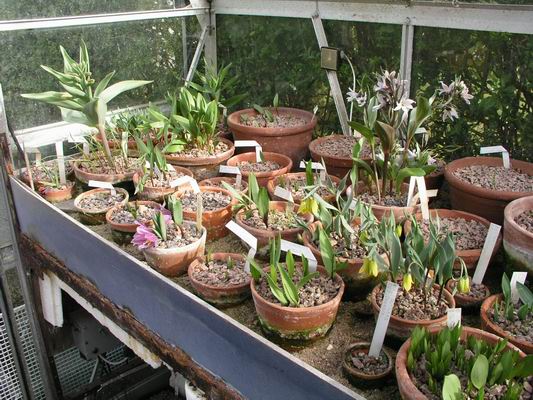
Fritillaria house 1
The frits are well into action, despite the cold weather, and many have their flowers open now. When I look at this picture I see all the space wasted between the round clay pots. As we have a limited amount of space under glass I can see me turning completely over to square plastic pots which use the space much more efficiently. The bulbs grow just as well in them as long as you adjust your watering regime to take into account the fact that they do not lose moisture as quickly as a clay pot does. I have already started to use smaller clay pots to accommodate our increasing collection of the species - I would now rather have several small pots of different forms than one large medal winning pot full of a single clone.
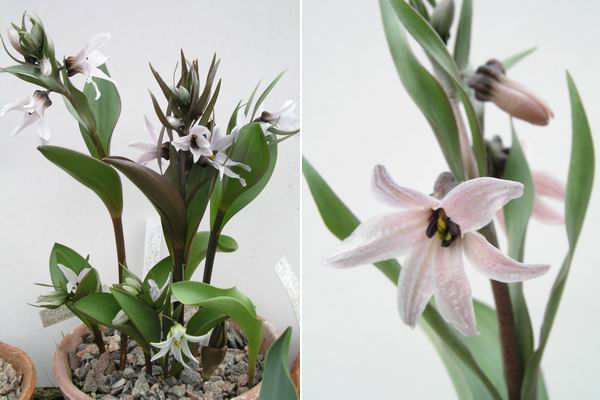
Fritillaria stenanthera
This pot of seed raised Fritillaria stenanthera shows the variation not only in flower colour but also when the individual clones come into flower - this is not desirable in a show pot as the judges would take points off for this 'uneven' flowering. When I am judging I like to see variation in a pot of bulbs, I think it shows visitors that plants are not all identical and variation is to be encouraged, so I am often at odds with some of the other judges.
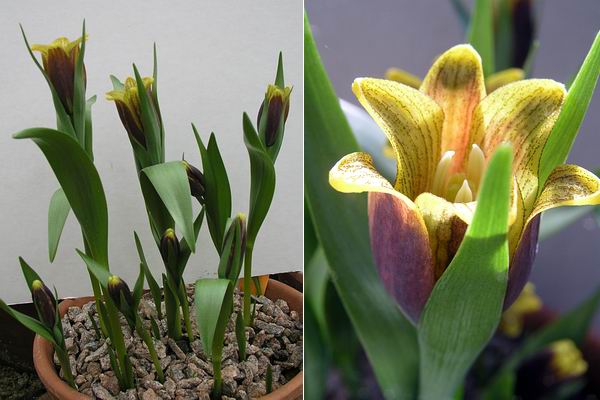
Fritillaria pinardii
I have so much trouble working out the difference between Fritillaria pinardii and carica. When the forms are extreme like this Fritillaria pinardii it is easy but to me, seeing them in cultivation, the two species come very, very close in the middle of the range. This form always opens its flowers pointing upwards like this, as they mature they turn through 90 degrees.
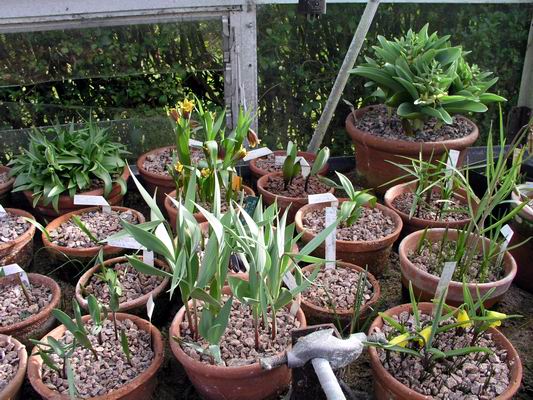
Fritillaria house 2
Further along in the frit house you will see that there are just a few pots with nothing showing yet. I always worry that I have lost these bulbs, but experience should reassure me that they are just late risers and will appear in a few weeks time. It is also interesting to note that the stems/leaves of immature bulbs usually emerge before those that are flowering size.
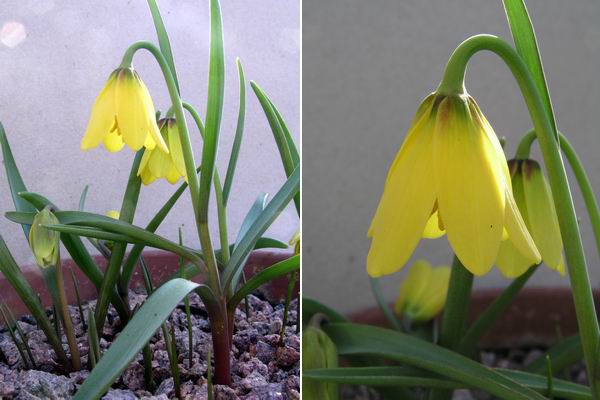
Fritillaria pudica
This is one of my favourite forms of Fritillaria pudica, I raised it from seed collected in Washington State and it is a more robust form than the form that has been in cultivation for a long time. All the forms of F. pudica that I have raised, from collected seed, have been of a similar size to the above and I often wonder when I see forms described as 'large form' such as 'Richard Britten' if it is not the other way around. Are these so called large forms the norm and the smaller one that has circulated for years, by means of the masses of rice grains that pudica produces, is in fact a small form?
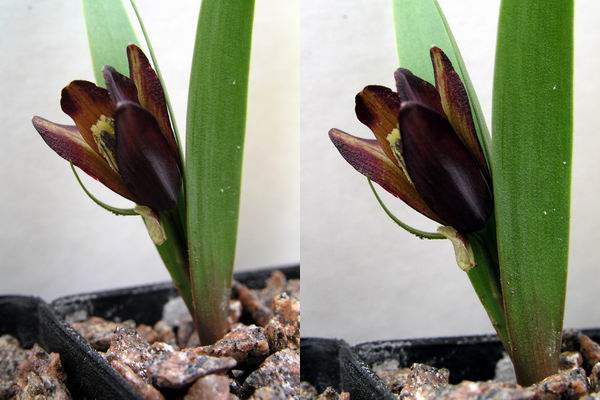
Fritillaria chlororhabdota
Fritillaria chlororhabdota is quite a mouthful of a name for this small species that is fairly new to cultivation - this is the very first flowering for us from seed sown in September 2001. The first flowers on a seedling frit are not always representative of the species and many young frits abort their very first flower buds as they decide that their bulb is not big enough to sustain flowers as well as grow new bulb scales.
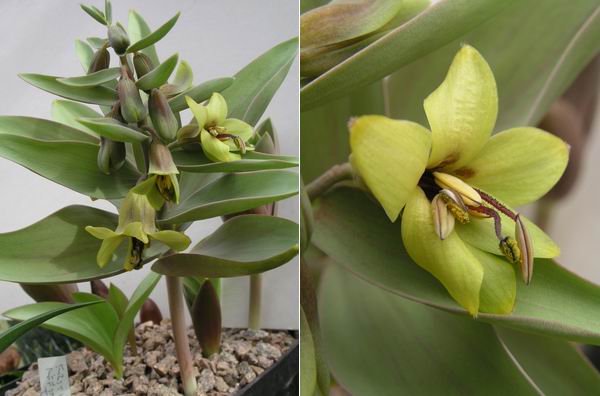
Fritillaria sewerzowii
Another pot of seedling bulbs some of which flowered for the first time last year, and some have yet to flower, is Fritillaria sewerzowii raised from wild seed collected by a friend in the Tien Shan. This unusual bulb is often put into the separate genus of Korolkowii by Eastern Botanists and they do have a good case to argue, as it displays many differences to most of the frits. I have only just noticed that the filaments, holding the anthers, are covered in fine brown hairs.
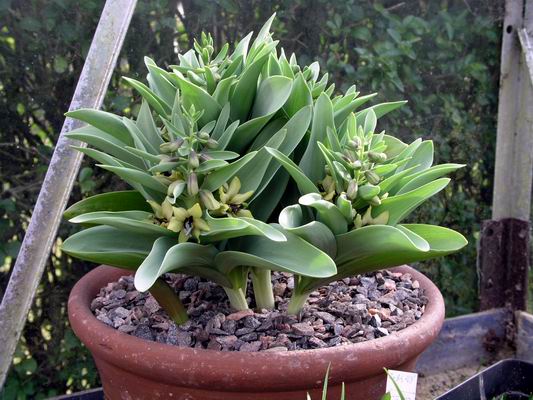
Fritillaria sewerzowii compact
This is a compact form of Fritillaria sewerzowii that I raised a number of years ago and I have grown it on as a clone in a separate pot - this is mostly due to the large size of the bulb. The other feature of this form is that the bulb splits up regularly forming new bulbs while other forms we have never split.
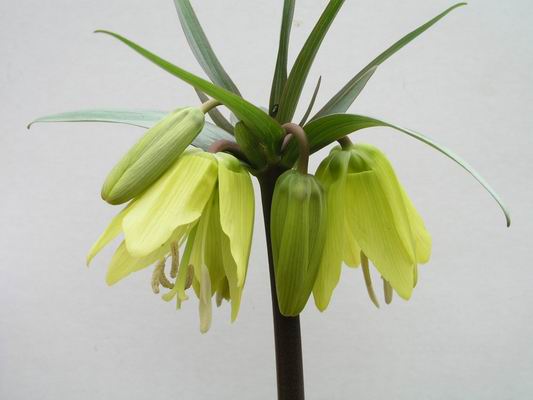
Fritillaria chitralensis
Our bulb of Fritillaria chitralensis continues to improve each year and this year it has six flowers topping off the stem - one day I hope that it will also split and increase our stock of this rare beauty.
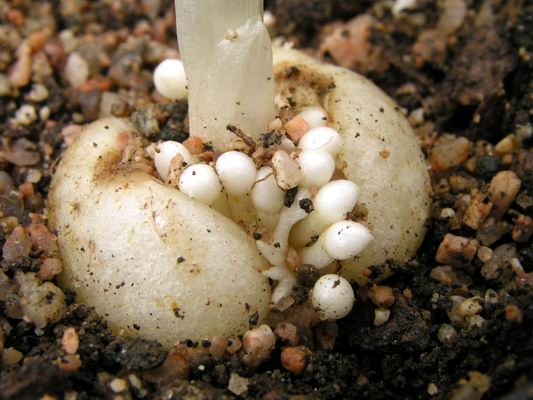
Fritillaria bulbils
Talking of increase, it is important to remember what is going on underground. Already the new frit bulb is starting to form at the base of the stem, in between last years scales, and rice grains are also forming on some of the Eurasian bulbs. The plants need a steady supply of water and nutrients to fuel this growth process so remember to water and feed your bulbs regularly.
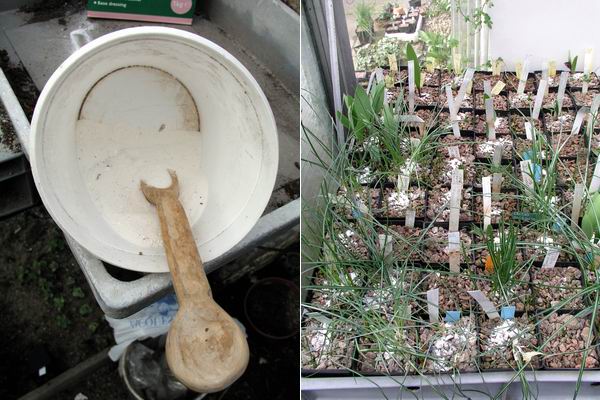
Potash feed
I have been out with the sulphate of potash this week, placing a small amount onto the surface of each pot before watering it in. (See log 7 2005 for full details of my bulb feeding regime.)
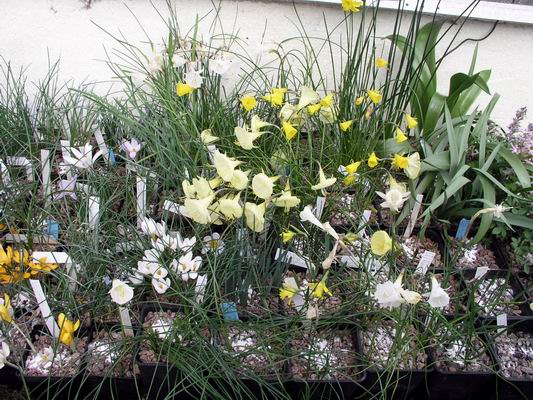
Feeding bulbs
I mostly do this as the flowers are just starting to fade and the bulbs will turn their energies to making a new bulb or increasing the size of the old one depending on the species. Narcissus, galanthus etc. - the true bulbs, increase the size of their bulb each year and some will eventually split. Crocus, frit, erythronium, tulip, colchicum etc. have an annual 'bulb' and form a new one every year at the base of the flower stem - if it produced two flower stems it will produce two new bulbs.
I also add the potash to frits as they emerge as one of the other benefits it gives the plant is a boost to the immune system and they are better able to fend off fungal attacks.
^ back to the top ^
|

